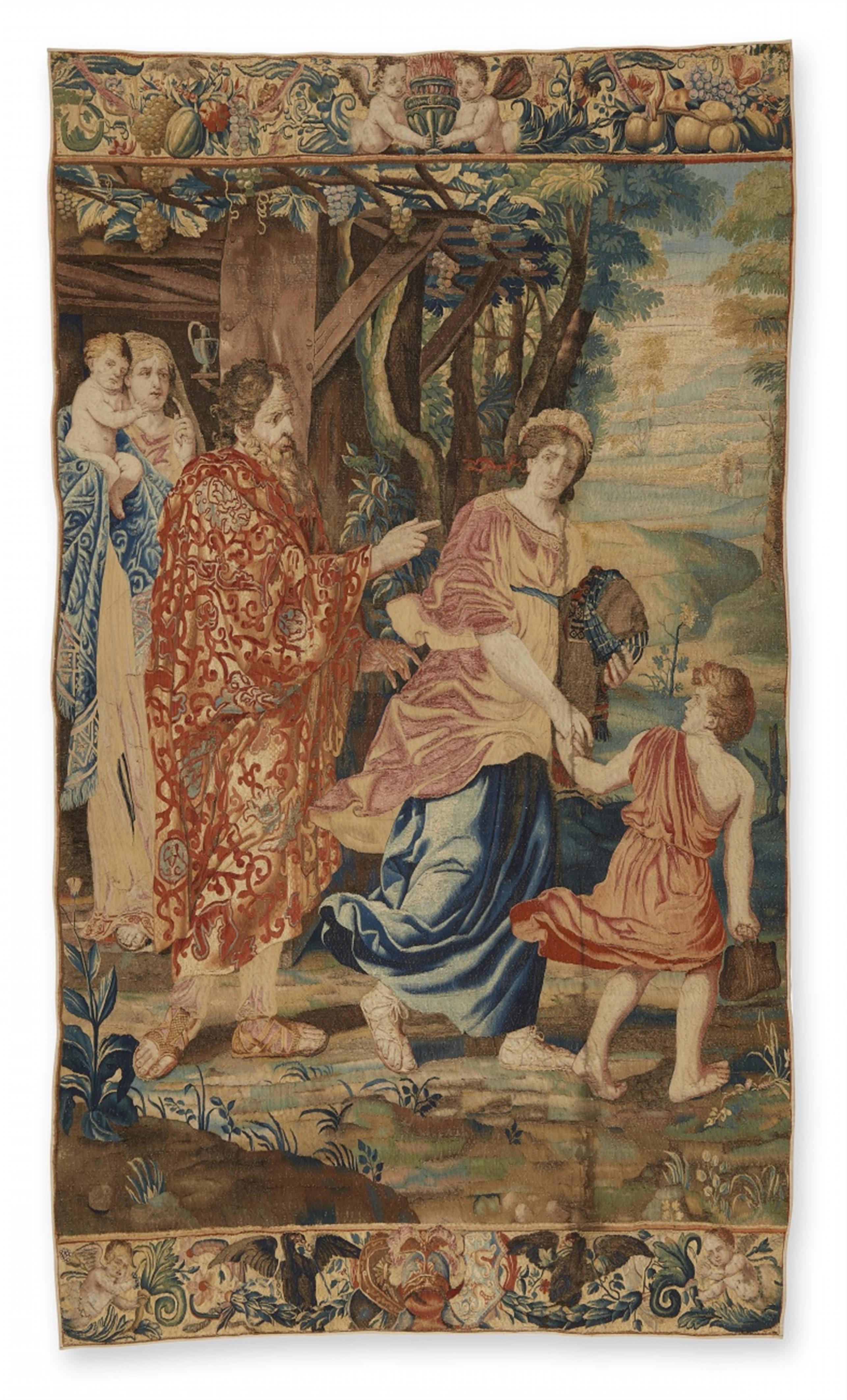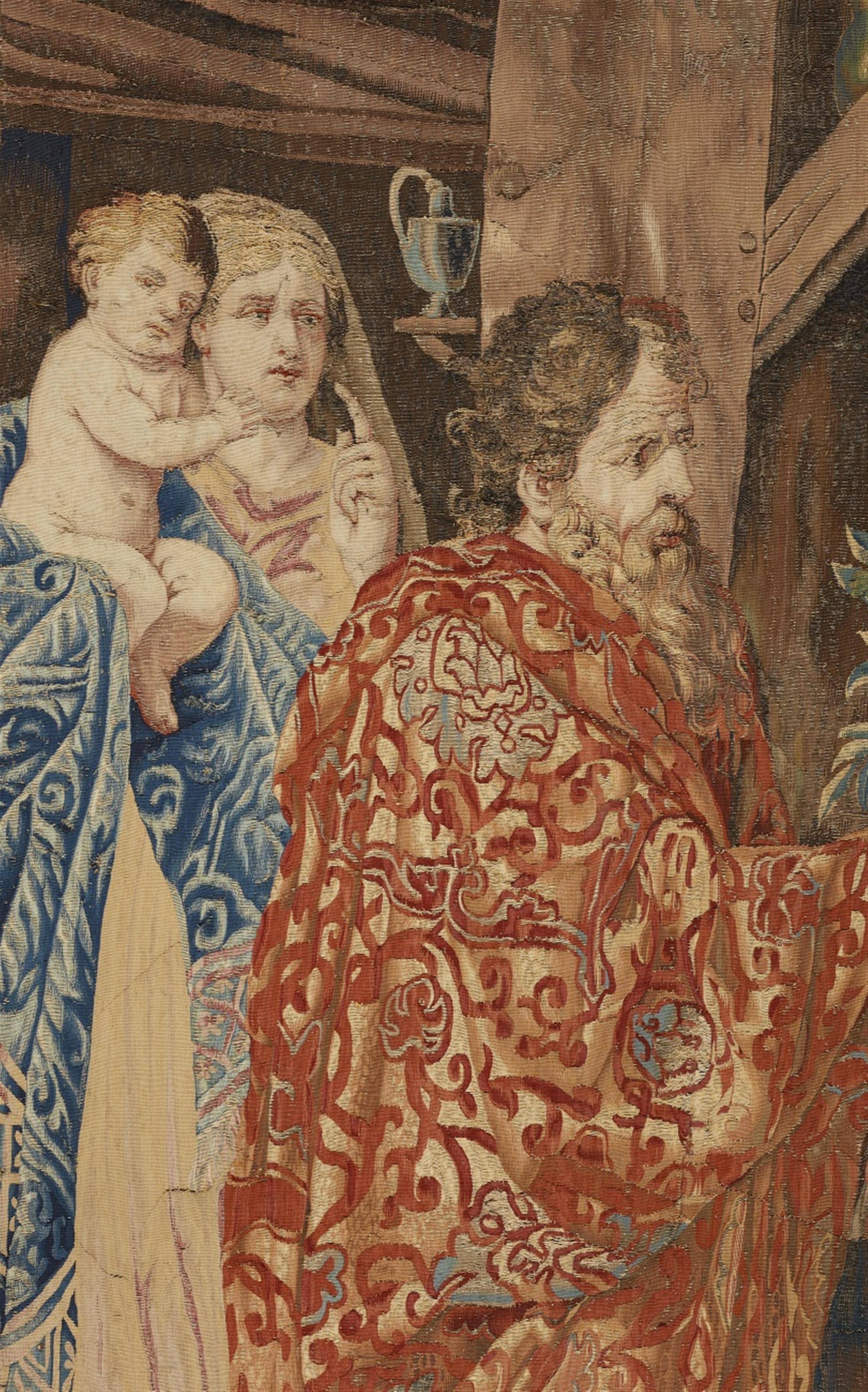A St. Petersburg tapestry with the expulsion of Hagar and Ishmael
Wool and silk fragment from the centre of a tapestry showing a detailed Biblical scene. Abraham is depicted on the left dressed in sumptuous garments, Hagar and Ishmael on the right and Sara and Isaac behind them. In the background we see a house overgrown with vines and a view onto a hilly landscape on the right. The original borders, depicting genii holding flaming urns and two eagles flanking trophies, have been attached to the top and bottom edges. With numerous older repairs, backed with linen. H 311, W 178 cm.
Imperial Tapestry Manufactory St. Petersburg, 1737 – 39.
After returning from his trip through France, Tzar Peter I (the Great) founded the Imperial Tapestry Manufactory in St. Petersburg in 1716 - 17. It existed until 1859. About 150 - 200 pieces produced by the manufactory are currently recorded. For many years, the Soviet Republic prevented people in the West from learning more about these products. This situation changed gradually in the late 1980s.
The Flemish artisan Philippe Behagle (1641-1705), who was recruited from Beauvais and had previously worked for King Louis XV in Gobelins and Tournai, was engaged by the tzar, probably along with other European specialists, to instruct the Russian weavers. Louis Caravaque (1684 - 1754) was engaged for the artistic direction. Dora Heinz mentions that 32 Russian craftsmen were already employed by the manufactory in 1732. However, the Flemish influence remains clearly noticeable, especially in the nuances of the facial features and the richness of detail in this tapestry. The piece presented here is thought to originate from a series made for Tzarina Anna Ivanovna following her accession to the throne in 1730, or around 1737 - 39. Anna Ivanovna gave a powerful boost to tapestry manufactory, as she had numerous new palace rooms to furnish.
Provenance
Galerie Mikaeloff, Strasbourg.
Private collection, Palatinate.
Literature
A tapestry with an identical trophy border from the Abraham series was acquired by the Hermitage Museum from Yves Mikaeloff in 1986.
Cf. Heinz, Europäische Tapisseriekunst des 17. und 18. Jahrhunderts, Vienna-Cologne-Weimar 1995, p. 552 f.




